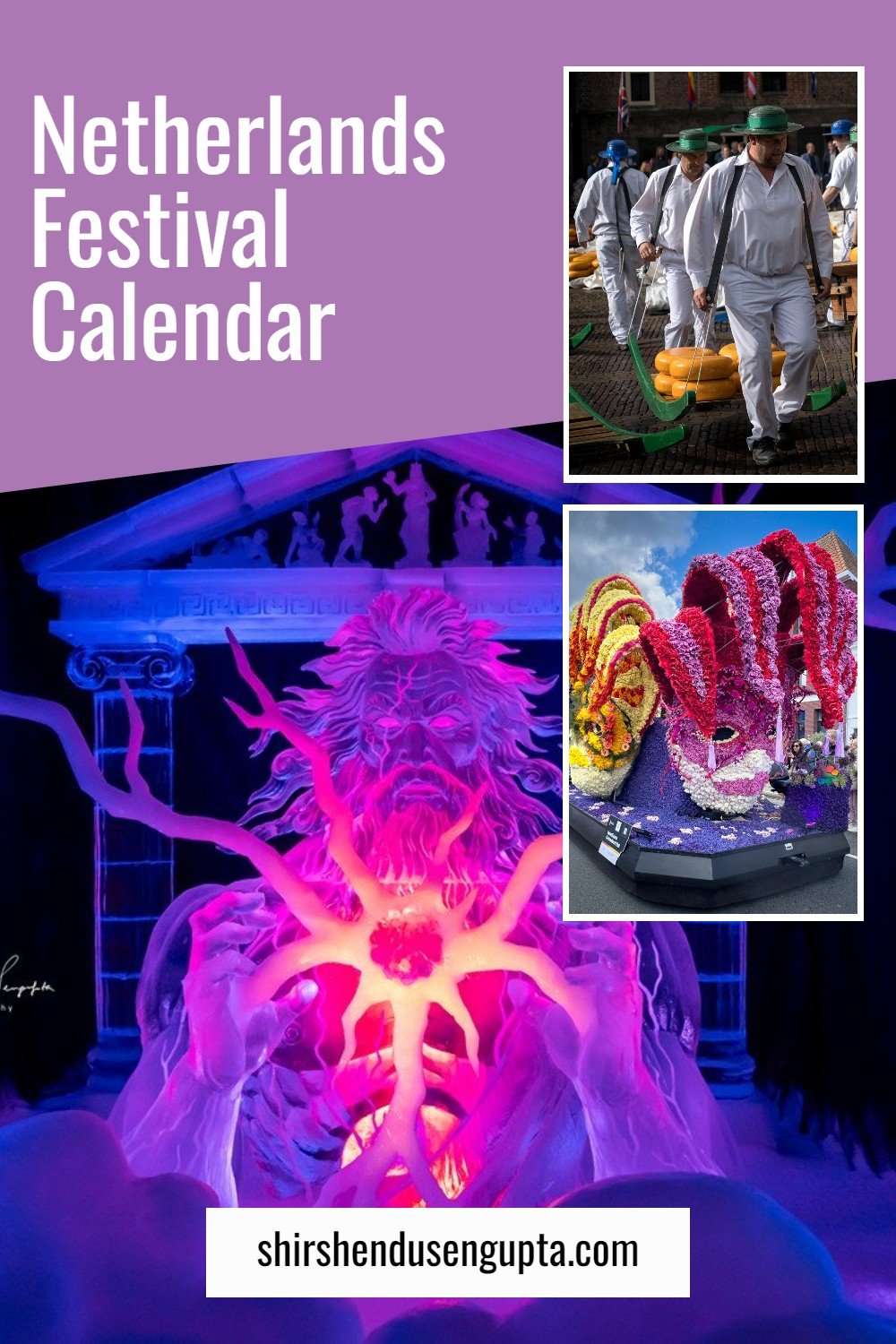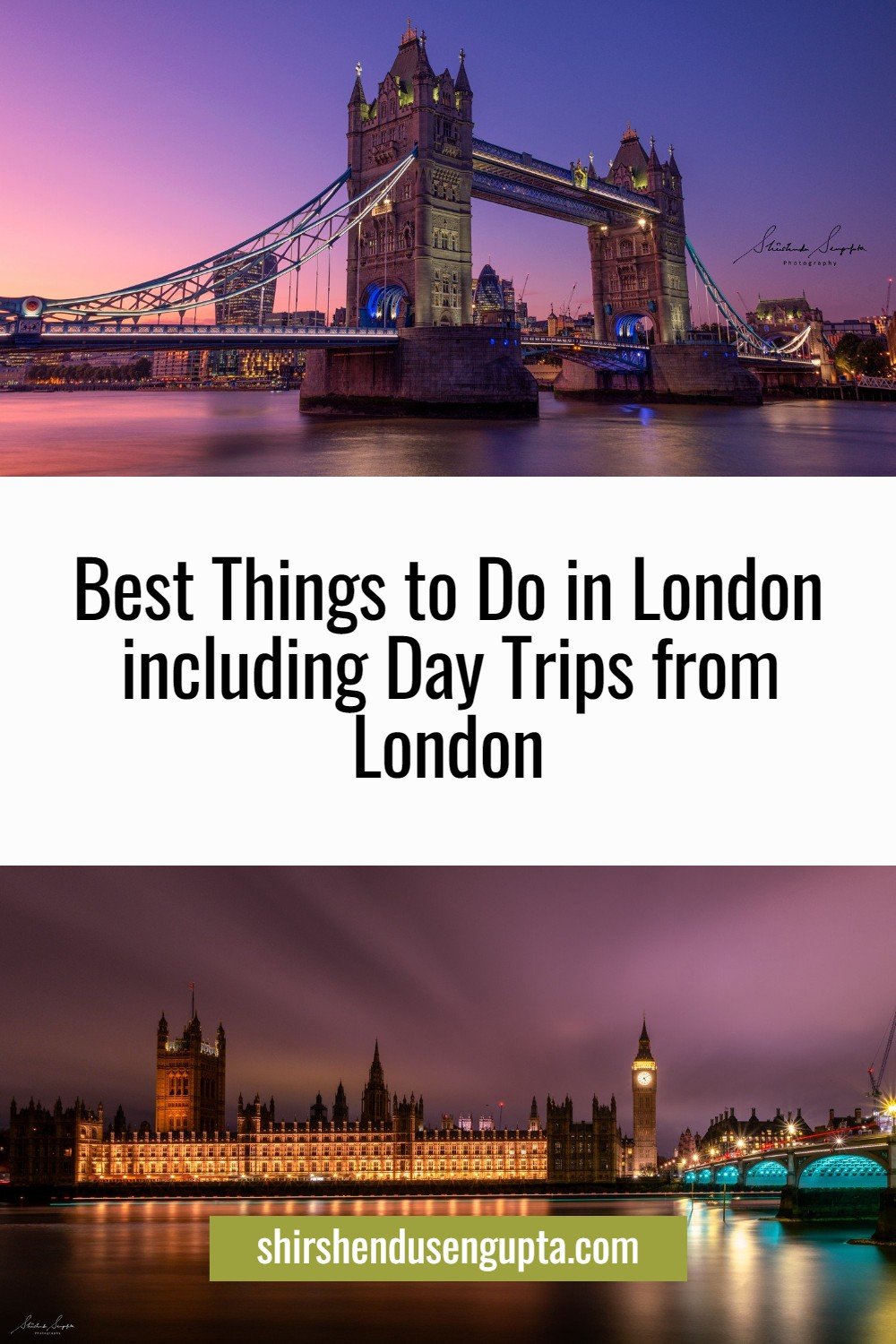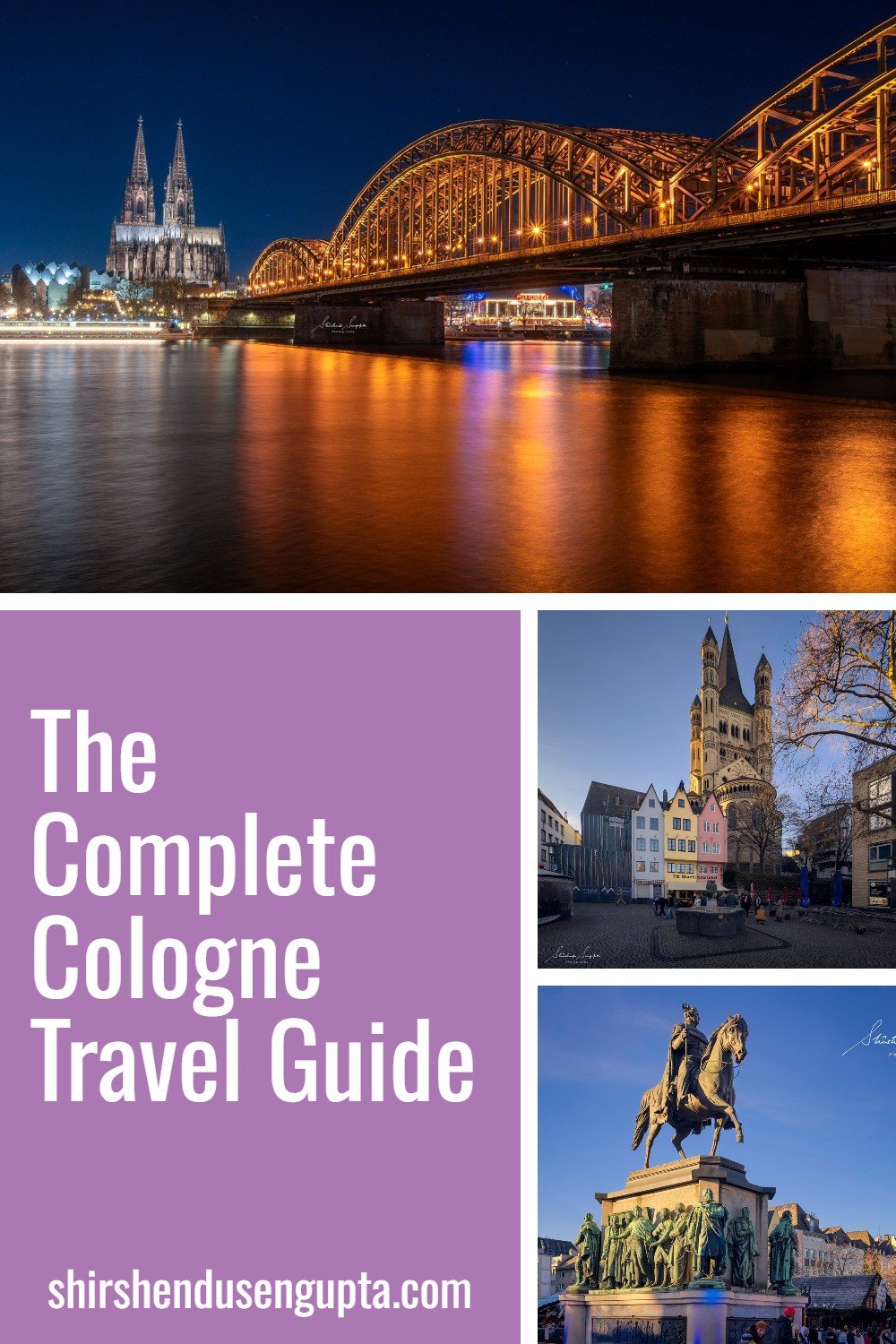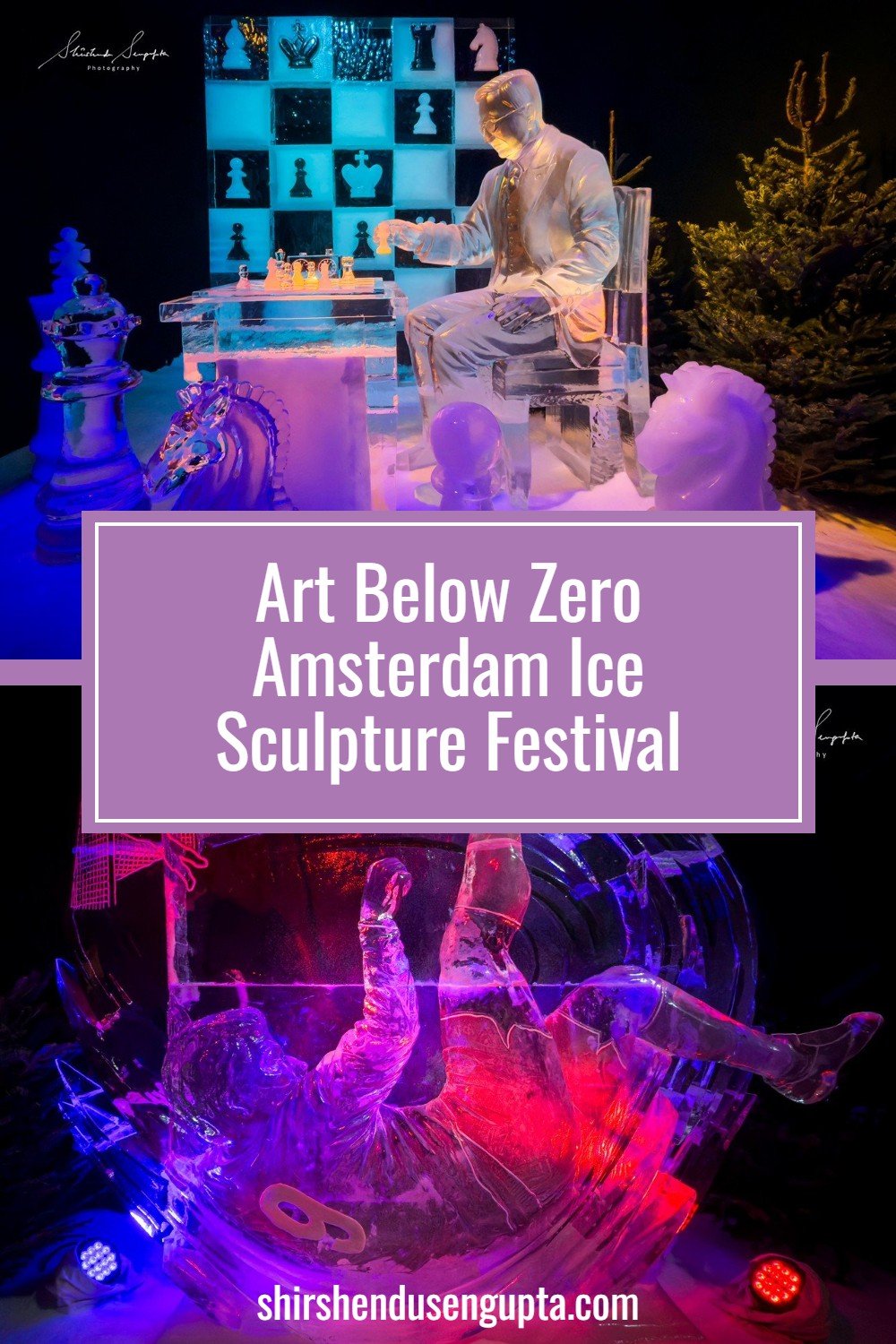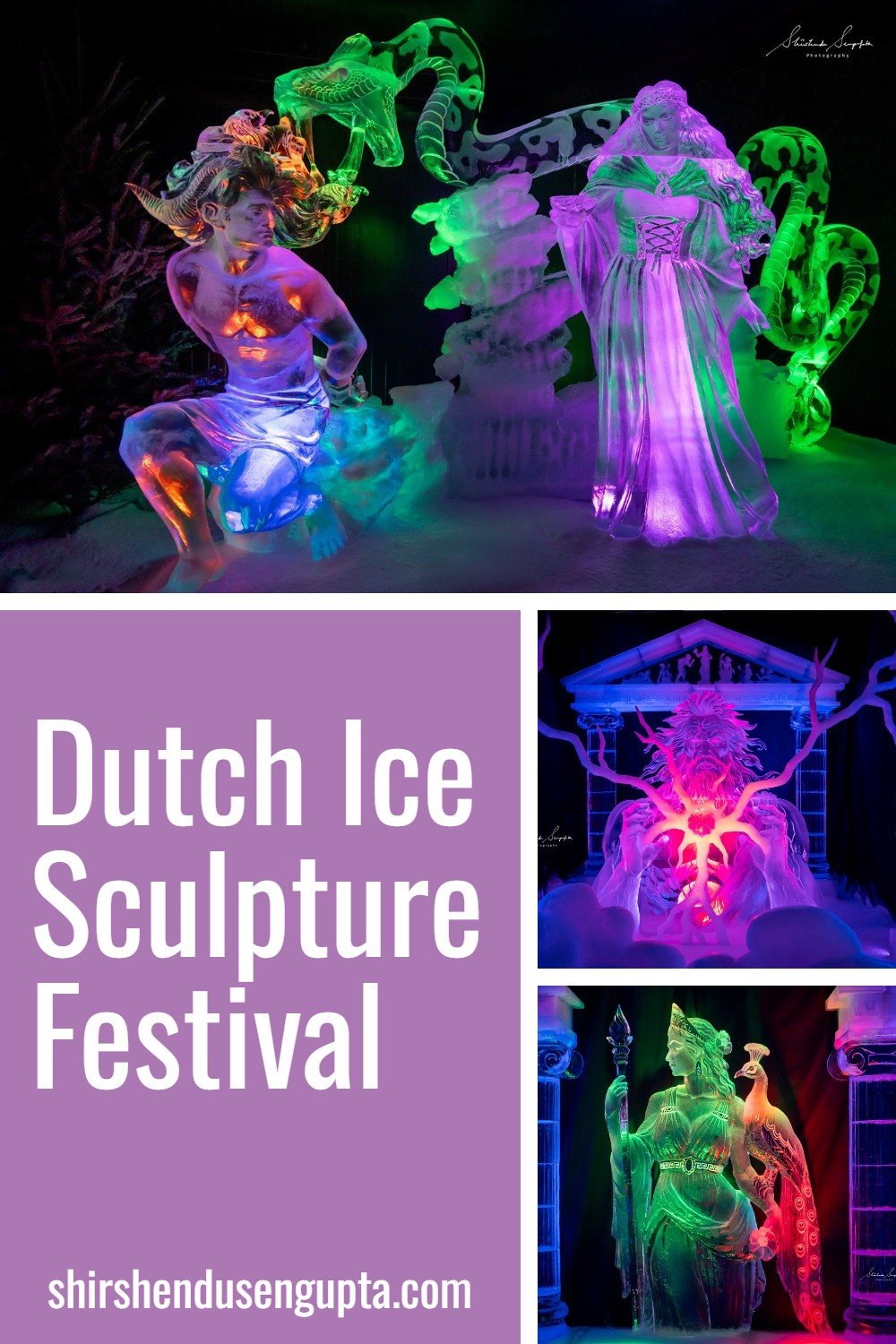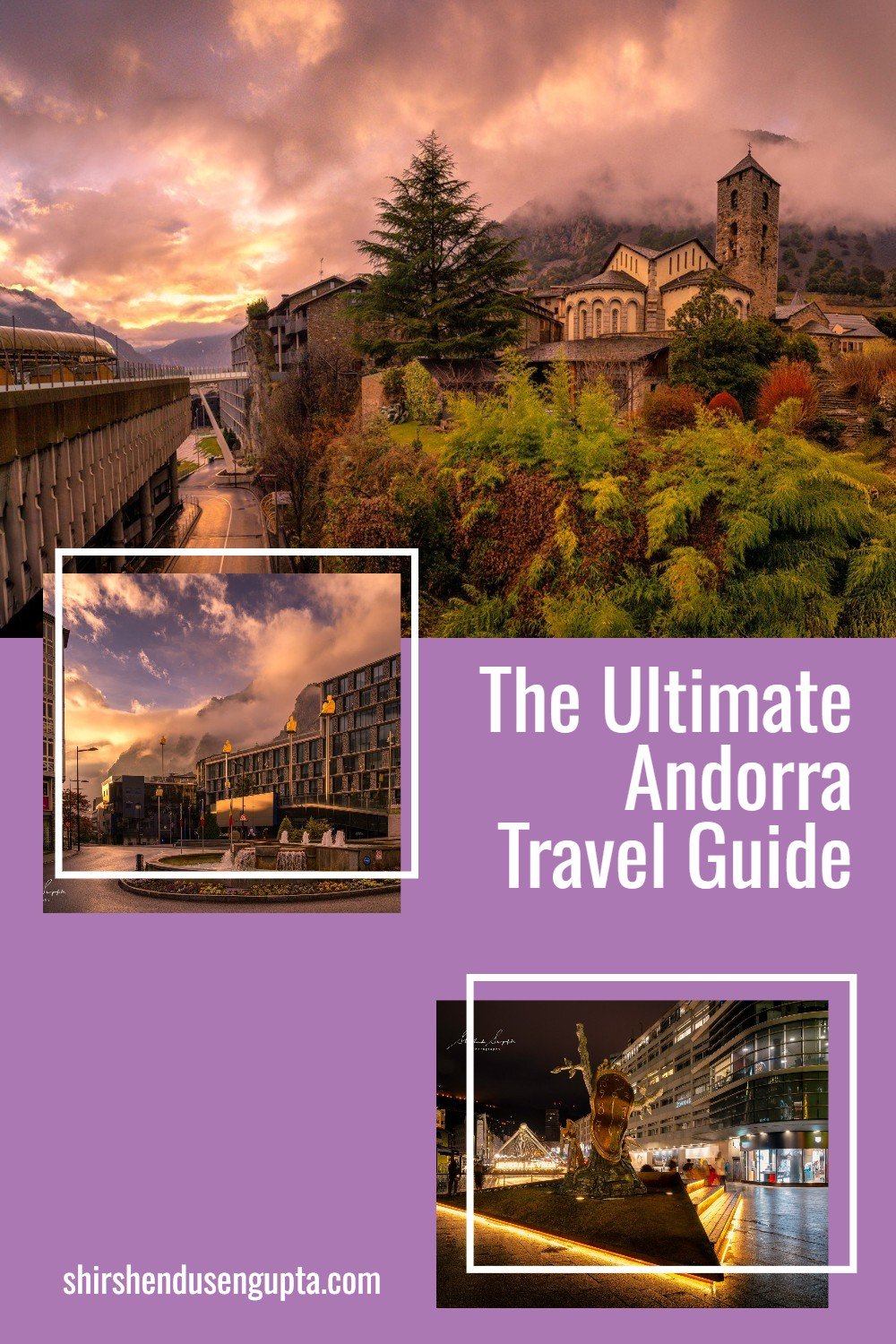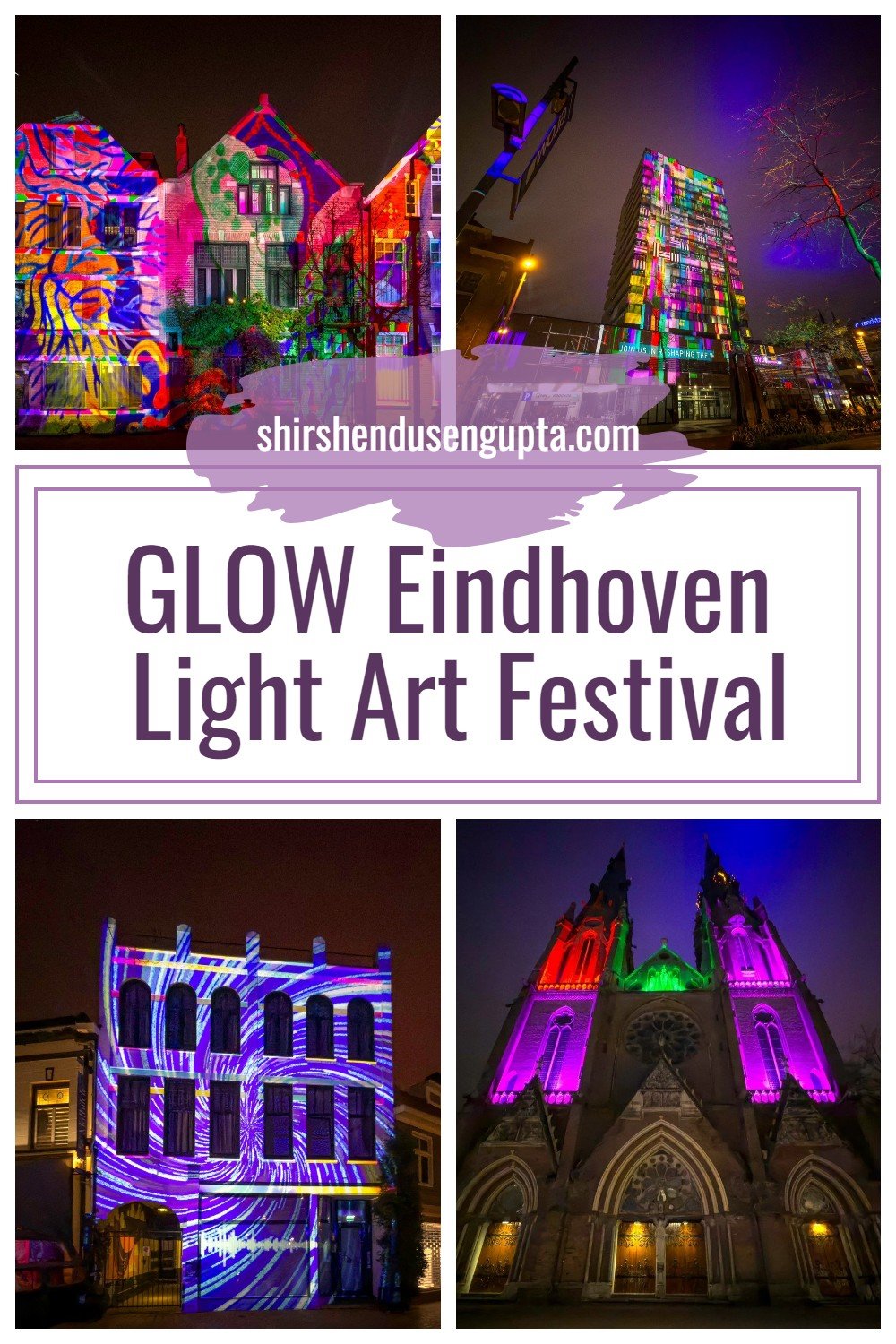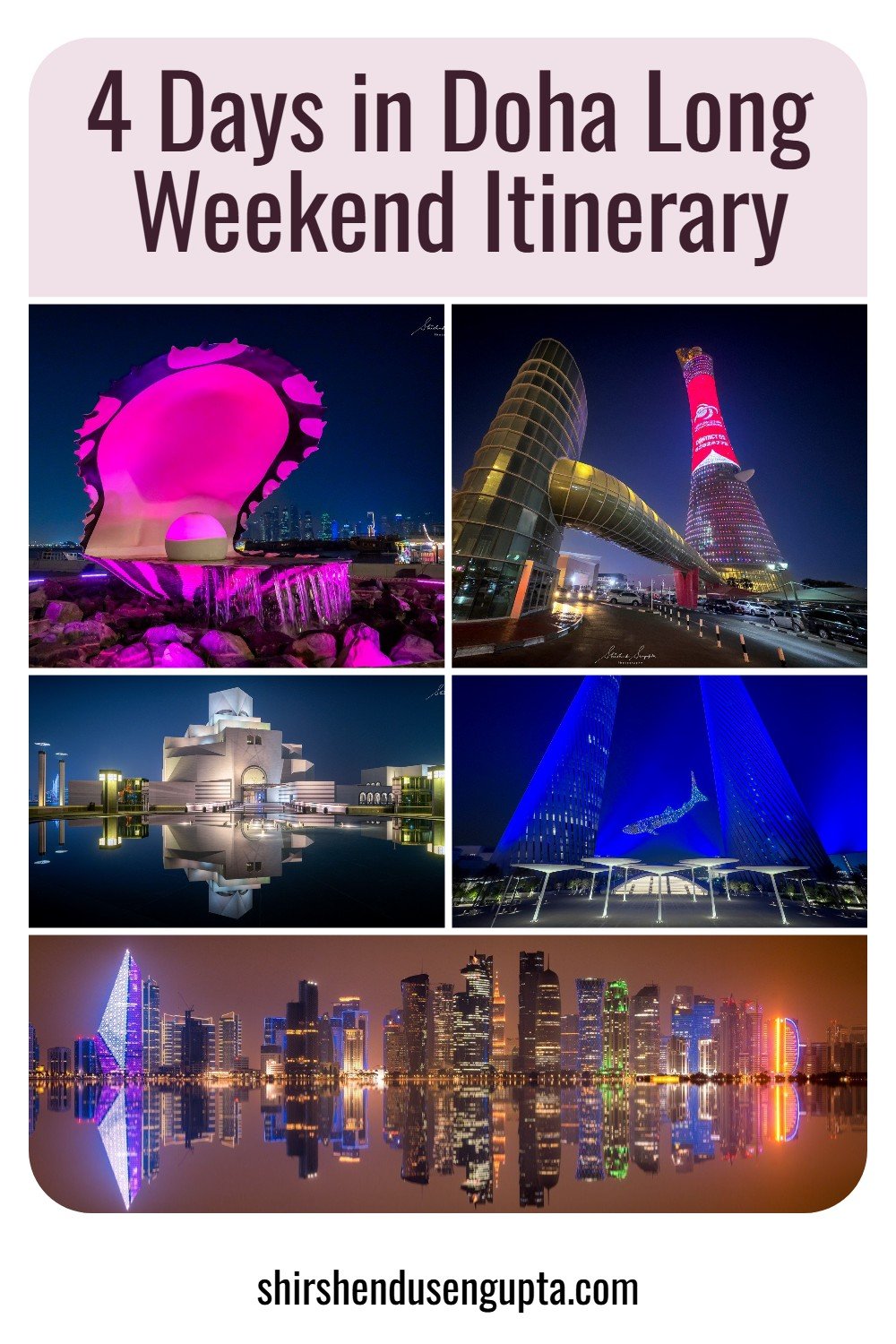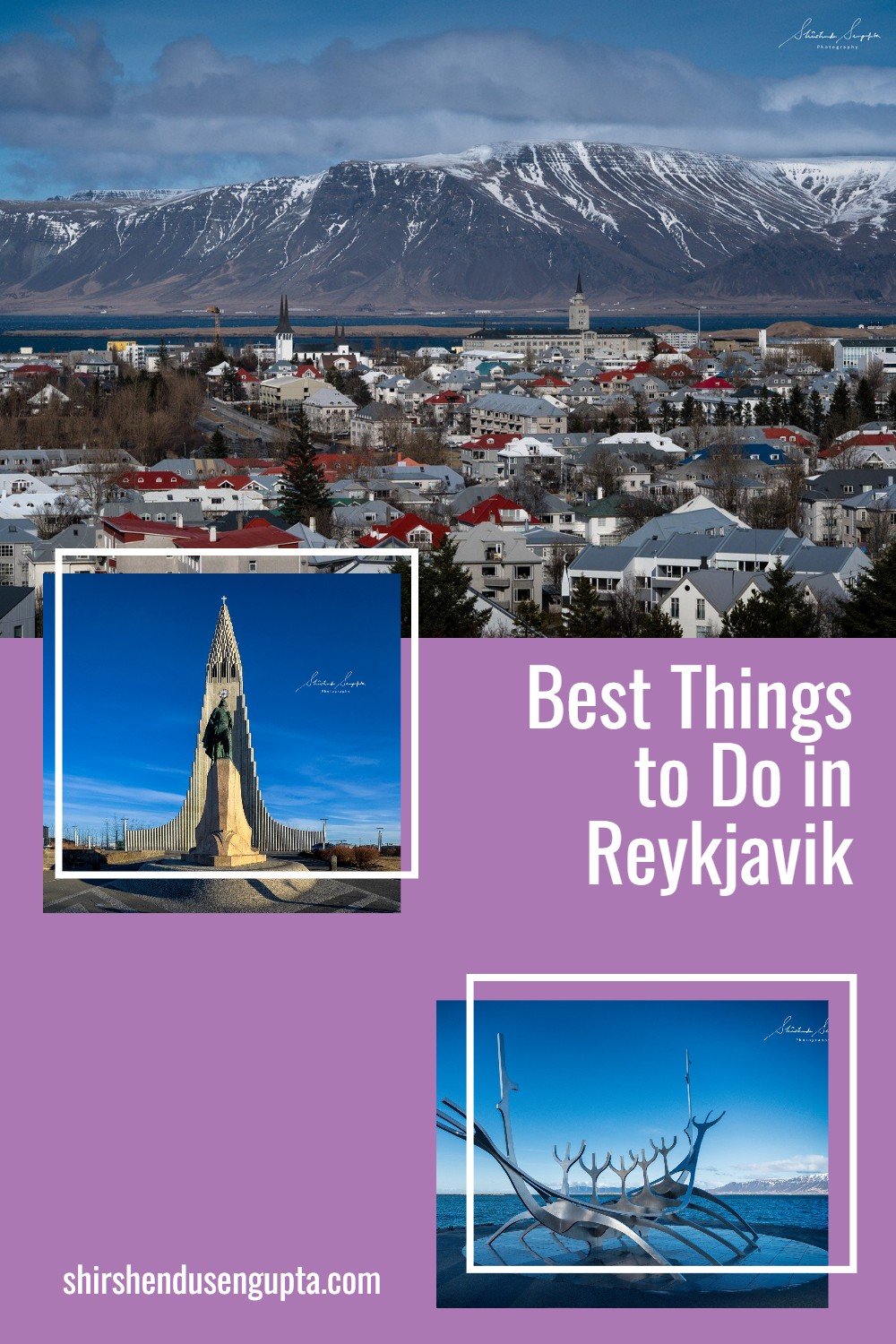12 Best Things to Do in Reykjavik | Top 12 Must See Tourist Attractions in Reykjavik, Iceland
Welcome to Iceland
Uniquely situated on the rift between the North American and Eurasian tectonic plates at the junction of the Atlantic and Arctic Oceans, the island nation of Iceland is aptly dubbed as the ‘Land of Fire and Ice,’ due to the presence of some of Europe’s largest glaciers and most active volcanoes. Iceland is a country with dramatic diversity in climate and geography ranging from volcanoes, lava fields, mountains, glaciers, ice caves, waterfalls, rivers, lakes, hot springs, and black beaches. And due to its vicinity to the North Pole, it’s also an iconic destination to chase the Northern Lights. All of these together, create an enchanting otherworldly ambiance that cannot be expressed in words but has to be experienced in person. And probably that’s the reason why Iceland has been the backdrop of several Hollywood and Bollywood movies and TV Series like Starwars, Tomb Raider, Die Another Day, Batman Begins, Thor: The Dark World, Interstellar, Fast and Furious, Game of Thrones, Vikings, and Katla to name a few!
To know more about the best places to visit in Iceland, please read our article Ultimate 5 Day Iceland Road Trip Itinerary | 37 Best Places to Visit and Things to Do in Iceland | Top 37 Photography Locations in Iceland.
About Reykjavik
Situated near Faxaflói Bay in southwest Iceland, Reykjavík is the capital of Iceland and the northernmost capital of any sovereign state globally. Glaciers, earthquakes, and volcanic eruptions have sculpted the landscape of the city over the millennia, as the area is geothermal; after all the name translates to "Smoky Bay." Though it only has 120,000 residents, it's a thriving city that welcomes a growing number of tourists each year. It is the political, cultural, and economic hub of Iceland and is regarded as one of the world's safest and cleanest cities.
Reykjavík is a city of striking contrasts: it is both polished and dynamic, small-town and international, youthful at heart and yet rich in history. There are numerous landmarks worth seeing, both old and contemporary, such as the Hallgrimskirkja Church, Sun Voyager, and the recently constructed Harpa, an oceanfront music and conference facility. Reykjavík has everything you might possibly need nearby, including theaters, museums, galleries, cafés, and swimming pools. Therefore, it's probably best to explore the city on foot or by bicycle.
Reykjavík was supposedly founded in 874 by the Norseman Ingólfur Arnarson. It was a tiny fishing community and trading station up until the 20th century. On August 18, 1786, it was given municipal rights and became the administrative hub of the Danish-ruled island. As the seat of the Althingi (parliament) since 1843, it became the capital of a self-governing Iceland under the Danish king in 1918 and that of the independent Republic of Iceland in 1944. Today I’m going to take you along with me on a ride across the 12 best things to do in Reykjavik. Let the journey begin!
12 Best Things to Do in Reykjavik
1. Witness Stunning Views over Reykjavik’s Skyline at Perlan
Perlan, also known as "the Pearl," is a dome-shaped building in Reykjavík's skyline that, from its outdoor viewing platform, gives one of the best views of the cityscape. You can stroll around the edge and take in the breathtaking view here. Perlan, however, provides more than just views.
After extensive interior renovations in 2017, the museum building is currently home to the "Wonders of Iceland" exhibition, which features a number of exhibits, including the world's first indoor ice cave. More than 350 tons of snow, straight from Icelandic mountains, went into making this 330-foot-long structure. You can learn about Iceland's glaciers which are aiding in climate regulation besides being a vital source of fresh water for the island. In the "Forces of Nature" exhibition you can see, hear, and experience the strength of Iceland's powerful volcanoes, earthquakes, and geothermal energy - all of the features that distinguish Iceland from other places. The building also houses a cafe that serves coffee and light meals, a souvenir shop, and a planetarium with a display of the northern lights.
2. Marvel at the Hallgrimskirkja (Hallgrímur's Church)
At 74.5 meters (244 feet) tall, the Lutheran Parish Church of Hallgrimskirkja (Hallgrímur's Church) is the tallest and largest church in Iceland and also the most photographed location. Commencing construction in 1945, this church took nearly 50 years to complete and is named after the Icelandic poet and cleric Hallgrímur Pétursson (1614–1674) who was the author of the ‘Passion Hymns.’ The futuristic building resembles a hybrid between a rocket and a glacier with a characteristic curved spire and side wings that resemble an organ. The actual organ inside the church is another attraction. It has approximately 5,200 pipes, which range in length from a few inches to as long as 30 feet.
3. Admire the Sun Voyager (Sólfar)
There are sculptures all across Reykjavik but walk along the shoreline to the Sun Voyager for sweeping views and a peek at one of the most recognizable artworks in the city. Designed by Jón Gunnar Árnason, this gleaming steel sculpture honors the sun and resembles a Viking longship (called Sólfar in Icelandic). Its location also offers stunning views of Faxaflói Bay and Mount Esja, a vast mountain with hiking routes that are reachable from Reykjavik. It won the outdoor sculpture competition held in 1986 to celebrate Reykjavik‘s 200-year anniversary.
4. Visit the Harpa Concert Hall and Conference Center
Harpa, Reykjavik's concert hall and conference center, is one of the city's most recognizable buildings. Located at the western end of the Sculpture and Shore Walk, Harpa's contemporary building never fails to dazzle tourists and architecture enthusiasts. The unusual structure has received multiple architectural awards for its honeycomb glass front. The performing arts center also organizes a variety of events each year, such as the Reykjavik Jazz Festival, comedy plays, and symphonic performances. Discovering this magnificent building is indeed a great pleasure. While the lobby, its stores, and the restaurants are free to visit, viewing the performance spaces and using the restrooms costs you a small fee.
5. Enjoy the Sculpture and Shore Walk
The Sculpture and Shore Walk is a popular way in Reykjavik to spend a few hours soaking in the views of Faxaflói Bay and the peak Esja in the distance, admiring the sculptures, and taking a cool stroll by the sea. There are numerous stops throughout the short but pleasant stroll. Starting from Reykjavík's city center, you need to walk eastward along the shore to reach the Shore Walk. The first stop is the Harpa Concert Hall and Conference Center. As you keep going east along the shore, you soon reach the Sun Voyager. If you keep walking further you will come across several other sculptures like the Íslandsvarðan, the Shore Piece, and the Partnership sculpture before the Shore Walk ends at the Höfði House.
6. Hang Out at the Skólavörðustígur (Rainbow Street)
Skólavörðustígur, or Rainbow Street, is a colorful and lively street in the center of Reykjavik. The street runs from the Hallgrímskirkja church to Laugavegur, the main shopping street of Reykjavik. The street was painted in rainbow color in 2015 to celebrate Reykjavik Pride for the 17th time.
The buildings on Rainbow Street are renowned for their quaint and scenic exteriors, which are decorated with an array of vibrant hues. Both locals and tourists enjoy visiting the buildings since they contain a diverse range of stores, cafes, restaurants, and galleries. The street is especially well-liked for its distinctive and vibrant photo ops.
7. Stroll down the Laugavegur Street
Walk down the mile-long Laugavegur, which is regarded as Reykjavik's main street, for outdoor shopping, dining options, and pubs. Boutiques selling apparel, souvenirs, and specialty delicacies including regional cheeses and meats along this pedestrian-only strip. There's also a wide variety of eateries offering everything from sushi to Italian to Icelandic food.
8. Enjoy the Street Art around Reykjavik City Center
Reykjavík boasts a wealth of street art. From the Rainbow Street, or Skólavörðustígur, to the many paintings and graffiti on Laugavegur, the shopping street, and beyond. Here, unremarkable structures, obscure passageways, and even industrial infrastructure burst out with color.
9. Do the Golden Circle Tour
Golden Circle is a circular tourist route (loop) covering mainly 3 of Southwest Iceland's most popular attractions namely - the Þingvellir (Thingvellir) National Park, the Geysir Geothermal Area, and the Gullfoss Waterfall spanning a drive of 300 km (190 miles) from Reykjavik. So, if you are in Reykjavik for more than a day, you must do this tour.
To know more about the Golden Circle locations and how to visit them, please read our article Ultimate 5 Day Iceland Road Trip Itinerary | 37 Best Places to Visit and Things to Do in Iceland | Top 37 Photography Locations in Iceland.
10. Explore the Reykjanes Peninsula
The peninsula of Reykjanes is located in southwest Iceland and is known for its massive lava fields, active volcanoes, and elevated geothermal activity. The Reykjanes Peninsula is located in the Mid-Atlantic Rift, where the North American and Eurasian tectonic plates are drifting apart. The entire peninsula is incredibly volcanically active as a result of its geological environment, with moss-covered lava fields and cone-shaped mountains covering them. In fact, when we were there, the Sundhnúkur volcano in the Reykjanes Peninsula near the town of Grindavik, close to the Keflavik Airport, had erupted, and therefore the much-famed ‘Blue Lagoon Geothermal Spa and Resort,’ which is also located in the same area, was closed. It is a short drive from Reykjavik. So if you are there for more than a couple of days, you must do it.
To know more about the best locations to visit in Reykjanes Peninsula, please read our article Ultimate 5 Day Iceland Road Trip Itinerary | 37 Best Places to Visit and Things to Do in Iceland | Top 37 Photography Locations in Iceland.
11. Travel further to Southern Iceland
In addition to exploring the Golden Circle and Reykjanes Peninsula, I also advise you to visit Skógafoss and Seljalandsfoss, two of South Iceland's most well-known waterfalls and then travel further south to Vík, home to Reynisfjara, a massive black sand beach, Dyrholaey Peninsula, the Glacier Lagoon, and the Diamond Beach.
To know more about the best locations to visit in Southern Iceland, please read our article Ultimate 5 Day Iceland Road Trip Itinerary | 37 Best Places to Visit and Things to Do in Iceland | Top 37 Photography Locations in Iceland.
12. Witness the Northern Lights (Aurora Borealis)
The stunning dancing ribbons of light known as the Aurora Borealis, meaning "Lights of the Dawn" derived from the names of "Aurora," the Goddess of the dawn, and "Boreas," the personification of the northern wind, have mesmerized mankind for millennia. Despite its beauty, this amazing light show is actually a violent cosmic event. On the surface of the sun, solar storms release massive clouds of electrically charged particles called corona. Some of these particles eventually arrive on Earth after traveling millions of miles. The Earth's magnetic field, or magnetosphere, which is created by the planet's rotation, deflects the majority of these particles away, but some are caught in it and accelerate towards the north and south poles. The magnetic poles see a concentration of aurora activity because of this. The aurora display is known as the Aurora Borealis near the North Pole and the Aurora Australis near the South Pole. These particles then slam into the atoms and molecules of the gases that make up the Earth's atmosphere at up to 72 million kph (45 million mph), exciting/heating them. Heat causes different gases to release distinct colors. The aurora goes through the same procedure. Nitrogen is responsible for the tints of purple, blue, or pink that we see in the aurora, whereas oxygen is responsible for the green color. Because of the lines of force in the earth's magnetic field, which change and distort as it spins, auroras are known for their unique wavy patterns and "curtains" of light.
Witnessing the Northern Lights is surely a once in a lifetime opportunity. So you might want to set aside some time for that if you're visiting Reykjavik during the winter. Even if you can see the Northern Lights from Reykjavik your chances of seeing them outside the city away from "light pollution" from both interior and external lighting (such as streetlamps) are higher. For that you can choose to book a tour with local companies like BusTravel Iceland or Reykjavik Excursions, who can assist you in locating the best spots to see the northern lights and provide round-trip transportation from your accommodations. But bear in mind that the aurora borealis needs the ideal combination of meteorological conditions to appear, so even if you sign up for a guided trip, there's no guarantee you'll see the elusive light show.
Visiting Reykjavik
Best Time to Visit: Reykjavik and Iceland at large appear charismatic across all seasons. Although your travel itinerary will influence when you want to visit, summer is usually the best season to go. You can see the lush landscape, do animal spotting, go hiking, or do other summer activities at relatively higher temperatures and extended daylight hours, known as the midnight sun. For viewing the Northern Lights, September through March is the ideal time to visit Iceland. The country's well-known geothermal baths are best seen in the winter when they're likely to be less crowded. And if you're arranging a trip to see anything special, like the whale or puffin migrations, you must travel during a specified time of year. However, if you want the best of both worlds of summer and winter i.e. you want to see the real ‘Fire and Ice’ together and that too at a relatively low cost, go during spring as we went.
Number of Days to Stay: We suggest booking a minimum of three to four days to really enjoy Reykjavik and all of its attractions. You will have ample opportunity to explore the city center, see famous sites, and explore the Golden Circle and Raykjanes Peninsula. If you want to go further south, one week will allow you to do it at a much relaxed pace.
Best Place to Stay: There are many different lodging alternatives in Reykjavik to accommodate a range of tastes and price ranges. Most tourists choose to stay in Downtown Reykjavik (Miðborg), the heart of Reykjavik. It’s close to attractions, restaurants, bars, and the harbor, making it very convenient for sightseeing. Try to look for hotels or guesthouses in the vicinity of Laugavegur Street, which is the main shopping and dining area. If you want to stay in a quieter neighborhood with affordable accommodations yet in close proximity to the main attractions, I recommend staying at Vesturbær. If you are on a strict budget Hlíðar and Laugardalur just outside the city center could be good options for you.
Best Way to Arrive: Reykjavik is served by Keflavik International Airport (KEF), which is located about 50 km (31 miles) southwest of the city. It has direct flights from many major cities in Europe and North America.
Best Local Mode of Conveyance: Reykjavik is a compact and walkable city. Most of the major attractions in the city center are within walking distance of each other. Reykjavik’s public bus system is reliable and covers most areas of the city. Tickets can be bought using the Strætó app, and there are also day passes for more frequent travelers. Reykjavik is becoming more bike-friendly, and there are a number of bike rental options in the city. It’s a great way to explore if the weather permits. Taxis are readily available, though they can be expensive. Reykjavik does not have Uber or Lyft, but local taxi apps are available. But if you are planning to do the day trips from Reykjavik as I recommended above, renting a car is your best bet. There are several car rental agencies in the city and at Keflavik Airport. Note that driving conditions in winter can be challenging due to ice and snow.
To know more tips and tricks for visiting Reykjavik or Iceland at large, please read our article, please read our article Ultimate 5 Day Iceland Road Trip Itinerary | 37 Best Places to Visit and Things to Do in Iceland | Top 37 Photography Locations in Iceland.
Epilogue
So that brings us to the end of our journey across the 12 best things to do in Reykjavik. Please let us know in the comments below if you enjoyed reading this article.
And if you want to know more about the best places to visit in Iceland, please read our article Ultimate 5 Day Iceland Road Trip Itinerary | 37 Best Places to Visit and Things to Do in Iceland | Top 37 Photography Locations in Iceland. Until then, merry traveling and happy shooting!
Pin the article
Bookmark the article for reading later!
Want to license/buy photos in the article?
License photos for commercial/editorial use or buy photo prints!
Want us to write an article for you?
Articles for magazines, newspapers, and websites!
Watch our Videos
Check out our videos on our Youtube Channel!
Join the Newsletter
Get updates on our latest articles!
We respect your privacy. Read our policy here.









